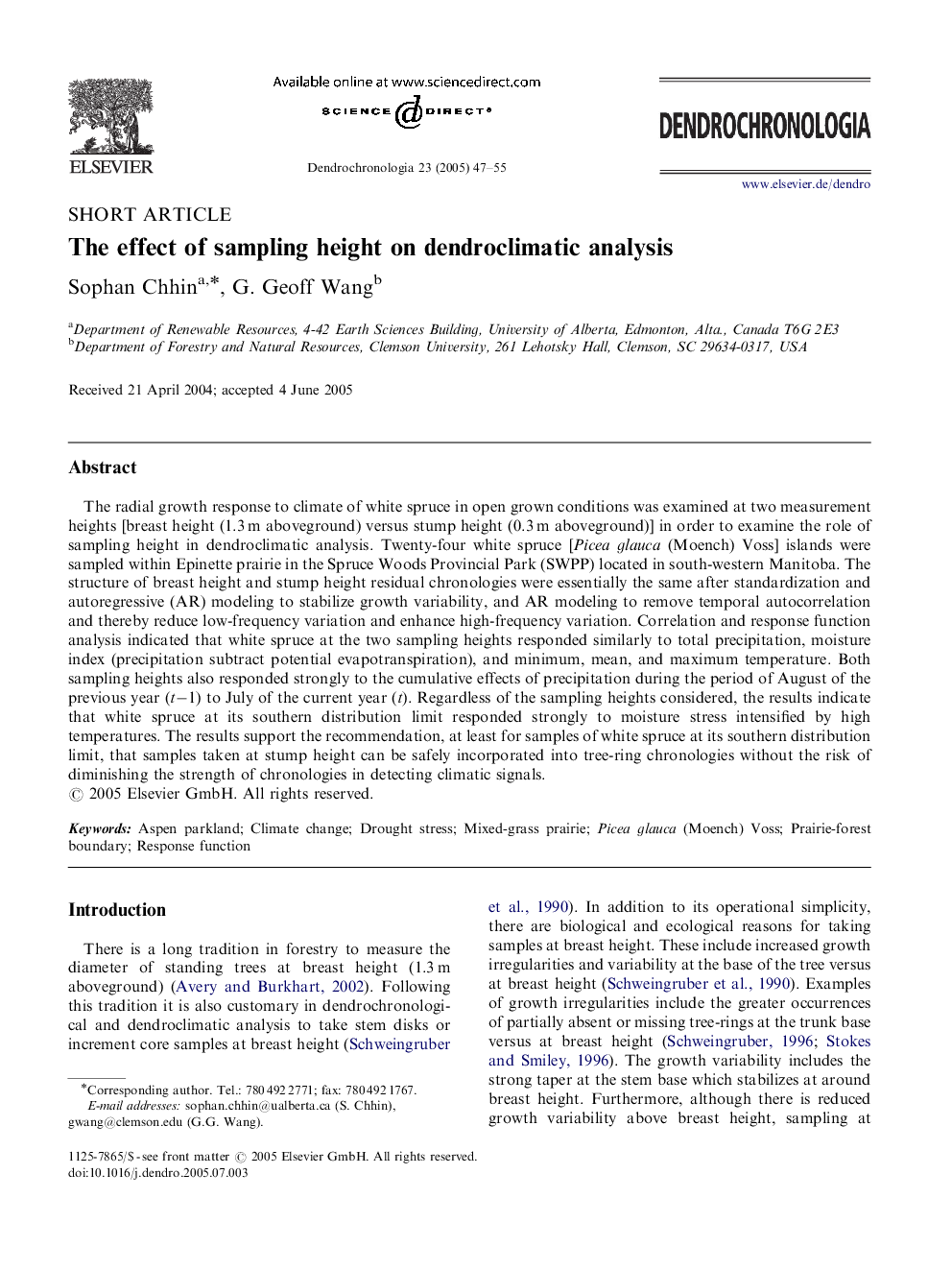| Article ID | Journal | Published Year | Pages | File Type |
|---|---|---|---|---|
| 10250308 | Dendrochronologia | 2005 | 9 Pages |
Abstract
The radial growth response to climate of white spruce in open grown conditions was examined at two measurement heights [breast height (1.3Â m aboveground) versus stump height (0.3Â m aboveground)] in order to examine the role of sampling height in dendroclimatic analysis. Twenty-four white spruce [Picea glauca (Moench) Voss] islands were sampled within Epinette prairie in the Spruce Woods Provincial Park (SWPP) located in south-western Manitoba. The structure of breast height and stump height residual chronologies were essentially the same after standardization and autoregressive (AR) modeling to stabilize growth variability, and AR modeling to remove temporal autocorrelation and thereby reduce low-frequency variation and enhance high-frequency variation. Correlation and response function analysis indicated that white spruce at the two sampling heights responded similarly to total precipitation, moisture index (precipitation subtract potential evapotranspiration), and minimum, mean, and maximum temperature. Both sampling heights also responded strongly to the cumulative effects of precipitation during the period of August of the previous year (tâ1) to July of the current year (t). Regardless of the sampling heights considered, the results indicate that white spruce at its southern distribution limit responded strongly to moisture stress intensified by high temperatures. The results support the recommendation, at least for samples of white spruce at its southern distribution limit, that samples taken at stump height can be safely incorporated into tree-ring chronologies without the risk of diminishing the strength of chronologies in detecting climatic signals.
Related Topics
Physical Sciences and Engineering
Earth and Planetary Sciences
Atmospheric Science
Authors
Sophan Chhin, G. Geoff Wang,
